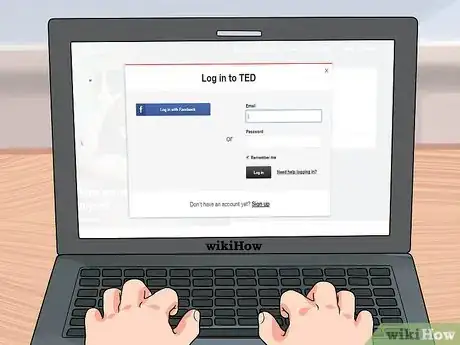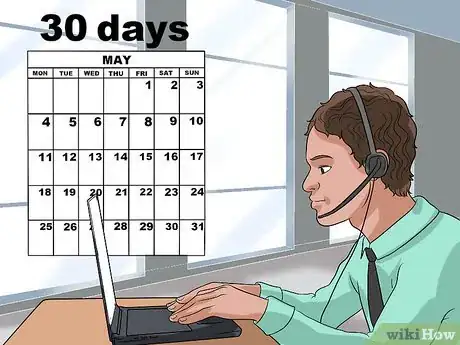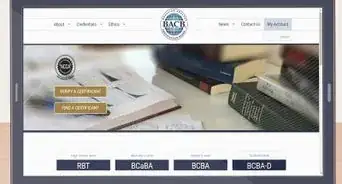This article was co-authored by wikiHow Staff. Our trained team of editors and researchers validate articles for accuracy and comprehensiveness. wikiHow's Content Management Team carefully monitors the work from our editorial staff to ensure that each article is backed by trusted research and meets our high quality standards.
This article has been viewed 31,857 times.
Learn more...
TED Translators work to spread knowledge by bringing the content of TED talks to new languages. The translators either create subtitles of videos or create transcripts of the videos. The TED Translation Project is an open-sourced collaborative community where people all over the world come together to translate TED talks into a variety of languages. If you are a fan of TED talks and know two languages (or more), then you might be interested in joining this brilliant collaborative community.
Steps
Meeting the Requirements
-
1Make sure you are sufficiently fluent in the spoken source language. You must be fluent in both the language of the TED talk (almost always English), and the language that you are translating into.[1] Therefore, you need to be able to capture the nuances of spoken English well enough to translate it into the target language.
- Fluency means that you speak or read your non-native language with sufficient skill as to equal or approach the level of a native speaker of that language.
-
2Make sure you are sufficiently fluent in the target written language. TED talks often talk about obscure and technical subject matter. If you choose to transcribe or subtitle, you must be fluent enough in the target language to translate the jargon and cutting edge vocabulary that you'll hear.Advertisement
-
3Familiarize yourself with best practices. You must familiarize yourself with and abide by subtitling best practices. You can find a list of best practices at http://www.ted.com/participate/translate/guidelines#h2--subtitling. Some important ones to be aware of include:
- Putting the proper number of lines and characters in each subtitle.
- Making sure the reading speed for each line is not too fast or too slow.
- Compressing the written material while preserving the meaning.
Completing the Application
-
1Create your TED account. Signing up for a TED account is easy. Simply go to the TED site at www.ted.com and click on the “login” button at the top right. You will see a prompt directing you to either login or sign up. Click the button that says “sign up.” You will need:
- Your first and last name.
- Your preferred email address.
- A password that is at least six characters long.
- Alternatively, you can sign up with your facebook.com account. Just click the Facebook logo.
-
2Sign up. Once you’ve created a TED account, log in to the main TED site.
- On the top right is a drop-down menu called “participate.” Let your mouse cursor hover over the drop down menu. One of the options is “translate.” Click that option, which will take you to the TED translate page.
- When you have arrived on the TED translate page, click the button on the left side of the page that says “get started.”
-
3Fill out the application. At the bottom of the “get started” page, you should see a button that says “apply.” Click this button. It will take you to the amara.org page. Amara is the platform that TED uses for translation and transcription.[2] The application will ask you four questions, including:
- Why you want to translate/subtitle for TED. Something like "I want to translate for TED because I want to be part of a collaborative community and keep my language skills sharp" is fine.
- It will ask you to provide a description of your experience in the target language. For example, if you studied the language in school, were self-taught, or are a native speaker.
- The application also asks you to rate your language skills from 1-5, with 5 being the best and 1 being the worst.
- For the last question, explain how you learned about Amara.
-
4Finally, proofread your application. It doesn’t look great for a prospective translator’s application to be riddled with spelling and grammatical errors, so double and triple check to make sure that yours isn’t. The TED translation team should get back with you within five days, so you won’t be waiting long.
Getting Started With Translating
-
1Learn how to use Amara. The program that TED uses for translating and subtitling, is called Amara. Amara is run on a nonprofit basis, and while it is used by TED, it is available for all types of video subtitling. Amara is designed to be easy to use, with the combined length of all four training videos clocking in at less than five minutes. The videos will explain to you how to type, sync, review, and translate, and they are located at https://www.youtube.com/watch?v=-NxoPqYwVwo&index=1&list=PLjdLzz0k39ykXZJ91DcSd5IIXrm4YuGgE.
-
2Start off slowly. There’s no limit to how many TED talks you can transcribe or subtitle. However, you can only transcribe or subtitle one at a time, and you need to finish each TED talk you translate within 30 days. Also, you have to translate at least 90 minutes of material before you can review and grade other translator’s material.[3]
-
3Get to translating! TED translation is an open-source project. That means, like Wikipedia.org or wikiHow.com, that anyone can participate, and correction is outsourced to the TED translation community. So while you can submit anything you like, it is subject to review. Expect to be corrected on your mistakes!










-Step-9.webp)





















-Step-9.webp)






































